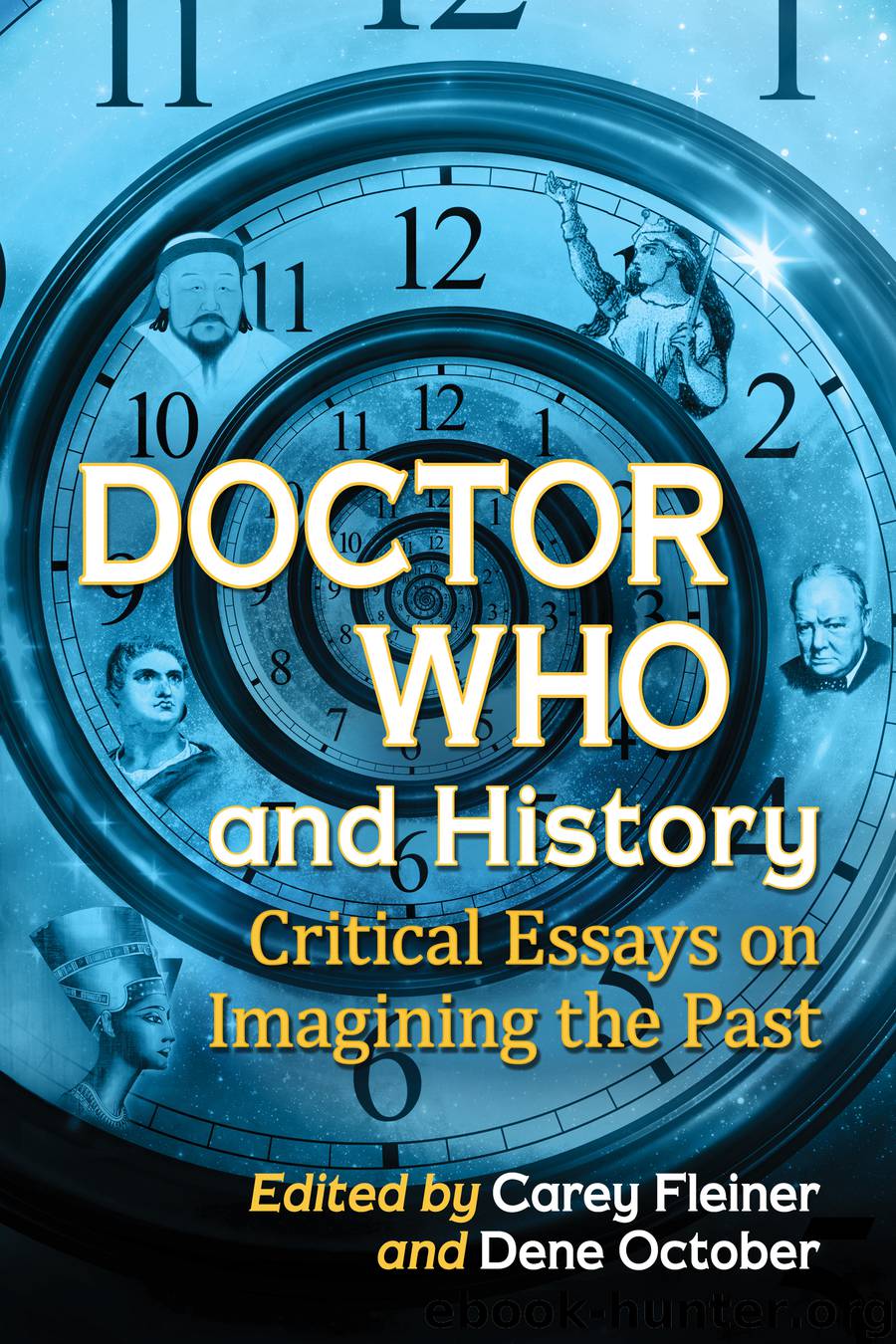Doctor Who and History by Carey Fleiner

Author:Carey Fleiner
Language: eng
Format: epub
Publisher: McFarland
Published: 2017-07-13T16:00:00+00:00
Playing with the Canon: Season 6B from Fanon to Canon
Because the conclusion of “The War Games” does not show the Second Doctor changing into the Third Doctor (Jon Pertwee), this scene has given fuel to a fanon, an extra-textual, therefore, non-canonical reading that is widely accepted by fans. Often, fans create these new “readings of characters or events,” in service of “correcting perceived errors of continuity” (October n.d.). However, as Parrish (2007, 33) points out, fanons emerge only through the repetition of particular readings that creates a general acceptance among fans. These readings begin to seem like they are canonical and thus establish a fanon. One of Doctor Who’s most prevalent fanons is that of Season 6B. This fanon asserts that the Second Doctor’s adventures do not end with “The War Games.” Season 6B is an attempt at retroactive continuity, explaining the Second Doctor’s later appearances in the program, namely “The Three Doctors” (1973), “The Five Doctors” (1983), and “The Two Doctors” (1985). As such, Season 6B creates an extra-canonical space in which stories may be told without altering the continuity of the Second Doctor’s regeneration into the Third.
The continuity issues that make up Season 6B were first codified in The Doctor Who Discontinuity Guide, written by Paul Cornell, Martin Day, and Keith Topping. These authors are part of a second generation of script and novel writers who also grew up as fans of the program, and as such, they occupy a hybrid position as both Doctor Who authors and fans (Griffiths 1999, 49). In this dual position, Cornell, Day, and Topping (2013) explain that “we are here to celebrate the fan way of watching television,” i.e., an acknowledgement of fans’ attention to continuity. These authors resemble fans whom Henry Jenkins (2012) describes as textual poachers. He and John Tulloch (1995, 40) further explain the poacher paradigm: “[It is] fan activity reflect[ing] both a fascination with media content (which leads them to continue to work with and upon the original program material) and a frustration with the producer’s inability to tell the kinds of stories they wish to see (which results in their progressive rewriting of the program ideology as the characters and situations become the basis for their own subcultural activity).” They further note the only power fans like these have “is the power to gloss and to write the aesthetic history of the show” (145), of which The Discontinuity Guide is an important example. In the case of Season 6B, close scrutiny of various Doctor Who serials by textual poachers provides them with clues they can weave into a narrative that explains why the Second Doctor can appear alongside his former and future incarnations in three separate serials. Dicks subsequently embraced the narrative space of Season 6B as a way to revisit the characters and situations of “The War Games” and by populating it with new enemies known as the Players, who appear in a trilogy of novels. Like the War Lords, the Players see humans as game pieces they can manipulate for their own purposes.
Download
This site does not store any files on its server. We only index and link to content provided by other sites. Please contact the content providers to delete copyright contents if any and email us, we'll remove relevant links or contents immediately.
Sita - Warrior of Mithila (Book 2 of the Ram Chandra Series) by Amish(54608)
Crystal Cove by Lisa Kleypas(38927)
The Crystal Crypt by Dick Philip K(36705)
The Crystal Egg by Wells H.G(35530)
We Ride Upon Sticks by Quan Barry(34411)
Crowbone (The Oathsworn Series, Book 5) by Low Robert(33505)
Primed Son (Dark Siren Book 4) by Eden Ashley(18866)
The Secret History by Donna Tartt(18808)
Cat's cradle by Kurt Vonnegut(15155)
Always and Forever, Lara Jean by Jenny Han(14773)
Ready Player One by Cline Ernest(14495)
Norse Mythology by Gaiman Neil(13172)
4 3 2 1: A Novel by Paul Auster(12263)
Crooked Kingdom: Book 2 (Six of Crows) by Bardugo Leigh(12201)
The Betrayed by Igor Ljubuncic(11766)
The Betrayed by Matthew Dickerson(11575)
Scorched by Sharon Ashwood(11258)
The Betrayed: Book one of The Lost Words by Ljubuncic Igor(11214)
Scorched Treachery (Imdalind #3) by Ethington Rebecca(11094)
